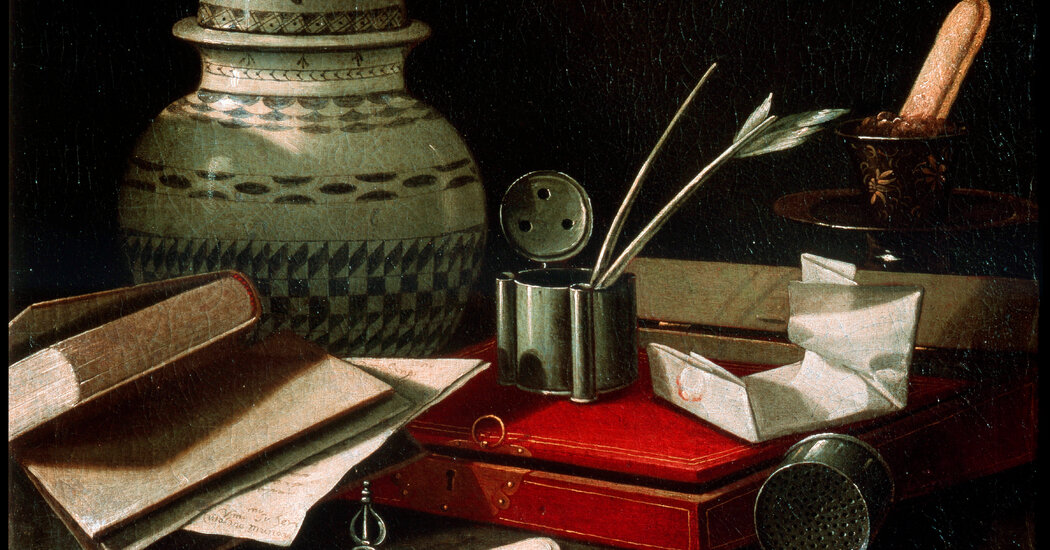
PENNING POISON: A History of Anonymous Letters, by Emily Cockayne
Long ago, in a moment of youthful discontent, I stumbled upon a primitive listicle on a now forgotten website that advised the reader on how to deal with feelings of dislike.
Alongside the expected bromides — perspective, self-reflection, jogging — the author suggested sending an extravagant gift, anonymously. It was impossible, apparently, to loathe someone on whom you had lavished such generosity.
This advice was so bizarre, not to mention expensive and time-consuming, that a part of me wanted to follow it immediately. I imagined deluging meanspirited internet commenters with seasonal bouquets and exquisitely packed boxes of citrus fruits. Maybe nice soap — the kind that comes in a cube, is flecked with lavender and exudes rustic elegance. There was something to it: Even the thought of intruding on the recipients’ lives in such tangible form gave me a weird illusion of power.
And no one would know it was me.
“Anonymity creates disinhibition,” Emily Cockayne writes in “Penning Poison,” a lively survey of the practice of sending anonymous letters “with the aim, or apparent aim, of unsettling the person they were sent to.” The author, a historian whose prior work has focused on neighbors and stench (among other things), is clearly qualified to explore this phenomenon, which sheds light on community dynamics even when the senders’ individual grudges must remain something of a mystery.
What, for instance, might impel someone, in 1894, to suggest via anonymous note that a grieving mother was about to bury alive her son, a curate who was very much dead? That letter, with which the author opens her sprawling history, combines several qualities common to the genre: It’s inscrutable, it’s sinister and it involves a man of the cloth. (So-called poison-pen writers in England between the years 1760 and 1939 were, we learn, obsessed with vicars.)
Cockayne ends her conscientious study where she does for a few reasons — in part because modern technologies effectively rendered the poison-pen genre obsolete; but also to avoid offending surviving correspondents (or, one assumes, moving them to sue). Needless to say, it also spares writer and reader the impossible job of wading through the bottomless mire of digital poison.
Even restricted to the age of ink and paper, this is a capacious subject — and, given that not everyone cherishes extortion attempts as family heirlooms, one that requires no small measure of scholarly digging. But her sample size is large enough that she provides the reader with a rough taxonomy, breaking the topic down into categories like “Threats,” “Obscenity,” “Libels” and “Tip-Offs.”
Cockayne’s letter writers range in class and profession; there are libidinous engineers and boatmen’s widows. A slightly creepy valentine keeps company with a “polite death threat.” Addressees are accused of professional indiscretions, enough dark financial secrets to power a Trollope saga and, of course, love affairs.
“In one way or another,” Cockayne writes, “most malicious anonymous letters concern themselves with reputation.”
Certain themes are perennial. Serial killers have traditionally found the unsigned taunt a natural medium, as have their copycats. There’s the aforementioned vicar fetish. (One early-19th-century vicar was himself a poison-penner — not to mention an arsonist.)
Then as now, those who felt powerless assumed swaggering personas and targeted public figures (often vicars). It seems, the author finds, that being able to observe the reactions was worth the risk of exposure. Everywhere there was anger, paranoia, loneliness.
The late Georgian and early Victorian eras might be called the golden age of the poison-pen letter, as “an obsession with privacy, secrecy and revelation created a natural breeding ground for anonymous letters and their malicious abuses of information. Notions of honor had secrecy at their heart; zones of intimacy and trust could only be created and maintained by close control over private information.”
Some cases were serious enough to attract the attention of the police — and salacious enough to attract the press. In 1912, one Eliza Woodman found a skinned kitten on her doorstep, followed by an only slightly less upsetting flurry of obscenely abusive notes. Her next-door neighbor, another respectable matron, was convicted of the harassment and served 18 months before it was discovered that Woodman had written the notes herself. (She was also responsible for the cat.)
Often, these highly personal matters went unreported to the police, only to be discovered by later generations; sometimes authorities dismissed the cases as unworthy of their interest. In any event, during the period Cockayne covers, detection was no easy business — invisible-ink-marked stamps and early cryptology were unreliable at best.
The shame of suspicion, and the inability to clear their names, proved unendurable for more than one accused writer and recipient; the author chronicles several tragic episodes of death by suicide. As a coroner remarked of one such case, the pain of receiving taunting anonymous letters that referenced a past criminal conviction was, for the victim, “more than he could reasonably bear.”
Read this as a comment on the essential human condition; perhaps even as an unlikely vehicle for escapism to a time when these cases were, at least, not a quotidian fact of public existence. Can we ever truly know what a writer has in mind? For this reader, what Cockayne has actually written is a history of that most devalued currency — privacy.
By examining individual cases — the how, when, where and, most important, why — Cockayne has produced something thought-provoking and humane. The opposite of a poison-pen letter, really. Revenge by Harry & David is somewhere between the two.
PENNING POISON: A History of Anonymous Letters | By Emily Cockayne | Oxford University Press | 299 pp. | $25





